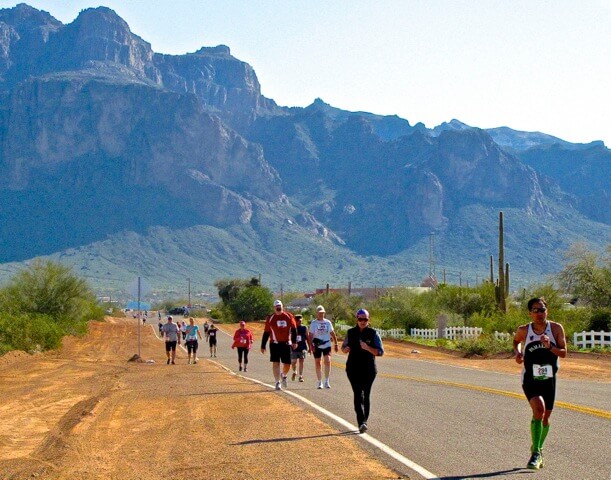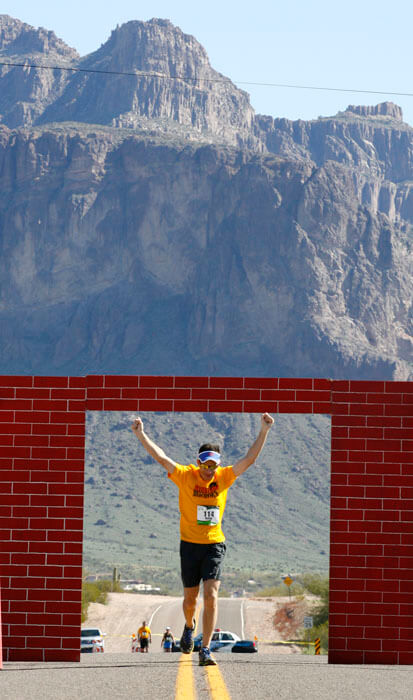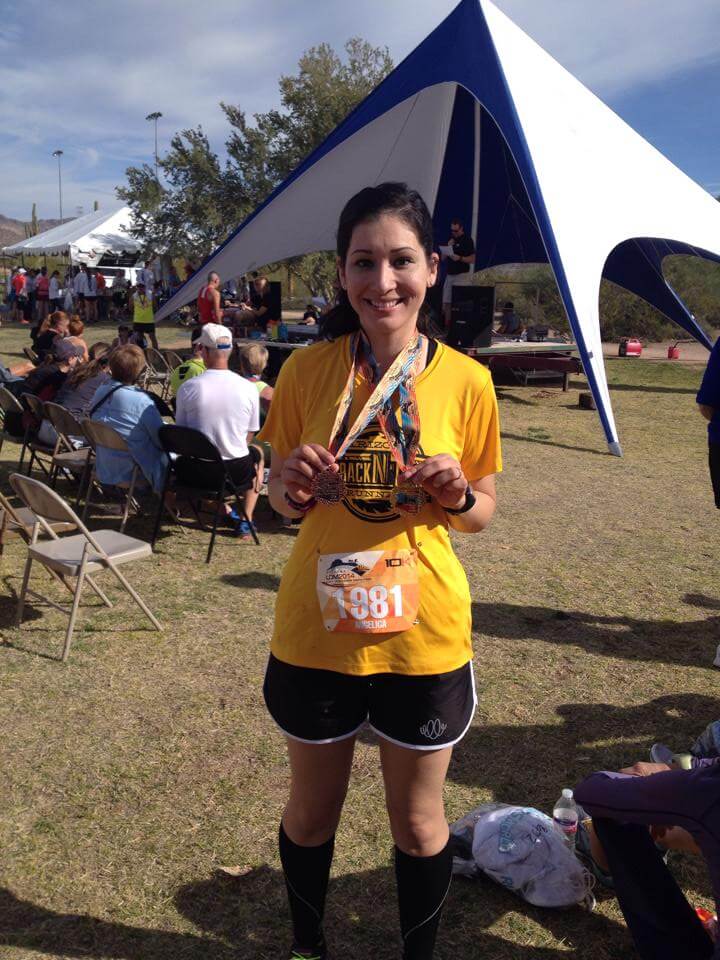I’ve been asked quite a bit how I was able to take such a big chunk off my time in New York and it really is because of two things: building up my mental strength and following a good training plan.
I’ll talk about the training plan I used, Hanson’s Marathon Method, in a separate post; but, I do want to spend some time talking about something I knew I had to do if I wanted to break 4 hours in a marathon.
The latter part of 2015 left me injured and out for 6 weeks. During that time, I reflected on what had gone wrong in my marathons up to that point and especially the Chicago Marathon, a race where I thought I could certainly PR and get the sub 4:30 goal I wanted. But, I didn’t even come close finishing in 4:45.
The anger I had post Chicago fueled me to work hard during my non-running injury time. I biked, I swam, I even did my first triathlon (a sprint-tri). I worked on my core strength and did some other body strength training exercises. And I also read this book:
…because I knew the biggest muscle I needed to work on was my brain. I wouldn’t say that I lacked mental strength as I consider myself a strong, disciplined person; but, I knew that what I thought was committed training could be taken a step further. I knew there would be more I would have to do if I really wanted to run a good marathon (and PR). It would just depend one how bad I really wanted it.
Well, I wanted it pretty bad.
The book isn’t a step-by-step “how to” book. The way it’s organized is by a collection of personal stories of struggle and triumphs from different athletes. As the author, Matt Fitzgerald, recounts each narrative, he explains several types of strategies the reader can use to overcome their own similar struggles.
I especially liked how the author incorporated different types athletes–there are triathletes, swimmers, bikers, runners, Ironmen, Olympians–and while they are professional athletes, the author makes sure to tell the reader that while at first glance we might not think we’re relatable to them, by sharing their stories of struggles we can see that we’re more alike than we think.
How Bad Do You Want It? makes sure to emphasize that the work is on you. When you encounter something that is “hard,” how much more can you push yourself? And when you do push further, you’ll see that you only lengthen that barometer of “hard” and it just grows and grows (which is a good thing!).
Here are a few excerpts from the book:
–side note: I really love how the author uses both male and female pronouns to describe an athlete.
“An athlete can have either a good or bad attitude about any given level of discomfort. If she has a good attitude, she will be less bothered by the feeling and will likely push harder.”
“The more discomfort an athlete expects, the more she can tolerate, and the more discomfort she can tolerate, the faster she can go.”
When I got my half marathon PR in Phoenix this past February, I employed some of what I read. I remember when I got to mile 10, I was still feeling comfortable so I pushed myself to make it hurt. I had never done that before. I also had at that point, never ran so fast for so long, and to push myself to run even faster was unbelievable to me. But I think because I accepted the discomfort, and expected it, it allowed me to actually do it. The last 3 miles of the race were my fastest.
A section of the book I particularly like, and what made me shoot for a sub 4 in New York instead the sub 4:30 I tried for in Chicago, was this:
“Setting time-based goals that stretch you just beyond past limits is like setting a flag next to a bed of hot coals to mark the furthest point you reached in your best fire walk. That flag says to you, “This is possible, and you know it. So why wouldn’t it be possible for you to make it just one step farther the next time?'”
I knew I could do a 4:30. I hadn’t done it, but I knew it was possible. A sub 4 scared the shit out of me. A 4:30 didn’t. The book noted that often times, an athlete will hold themselves back by trying to achieve time goals close to their previous best because the amount of effort and discomfort the athlete will experience is doable–they know what the pain feels like of their current best time. So when I decided to run New York, I told myself to test my limits. Go farther.
If you’ve been reading my blog for a while now, you’d know that I talked a lot about wanting a marathon PR and sub 4:30. Fitzgerald writes that “the more time people spend fantasizing about desired outcomes–the less effort they put into pursuing them and the less likely they are to achieve them.” I thought I was training hard, but was I really? Could I really say that when I toed each start line I had done all I could to prepare? That I was really ready for a sub 4:30?
I could certainly say I was ready for the New York City Marathon. In fact, it was the first race in which I had had zero negative thoughts going in and during the entire race. It was preparation that made me feel that way. “Real confidence comes from real results and real training,” says Siri Lindley, an athlete whose story is told in the book.
Anyway, I could go on and on, but this book was really instrumental in helping me work my mental running game. I’ve achieved a PR in every distance this year, and I know that a big contributor to my success was showing myself I could embrace discomfort, that pain was okay. You can find so many quotes and sayings that tell you “Embrace the suck!” but you have to practice, you have to train. And as cheesy as it sounds, it really does come down to how bad you really want it.
–When was the last time you raced and tested your mental strength?
–Have you read this book or other running related books? What are some of your faves?
–I was not paid or compensated in any way to write this review. The book was purchased by me and all thoughts and opinions are my own.






